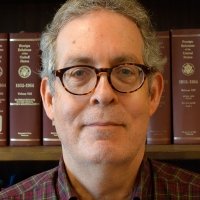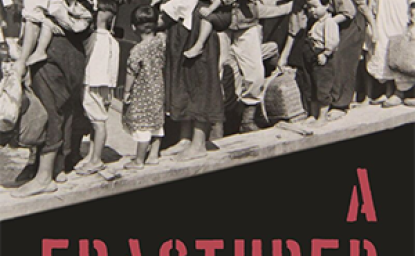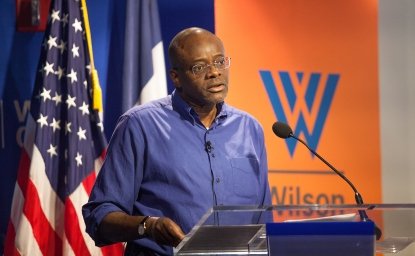Declassified 1964 National Intelligence Estimate Predicts India’s Bomb But Not Israel’s


-
New Release Reports Country-by-Country Nuclear Capabilities,
-
Fresh Data on Global Proliferation Trends in Mid-1960s
-
Finds “Better than Even” Chance India Will Soon Build a Bomb; But Mistakenly Concludes Israeli Leaders “Probably Have Not Yet Decided”
-
NIE’s Findings Add to Debate about How One State’s Acquisition of Nuclear Capability Could Affect Decisions by Regional Rivals
The US intelligence community predicted India’s nuclear bomb in 1964 but mistakenly concluded Israel had “not yet decided” to go nuclear, according to newly declassified documents posted today by the National Security Archive and the Nuclear Proliferation International History Project. Highlighting the posting is the National Intelligence Estimate (NIE) from October 1964, now declassified in its entirety by the CIA and including fresh details about the nuclear state of play on a country-by-country level right at the time of the first Chinese atomic test on 16 October 1964.
The report (Document 3) held that the "chances are better than even that India will decide to build nuclear weapons within the next few years." Although India had the capability to produce plutonium and the Chinese test was likely to produce increasing "internal pressures" for a decision, in fact it was years before India made a decision to produce nuclear weapons, even describing its 1974 test as a "peaceful nuclear explosion."
The estimate also concluded that Israeli leaders "probably have not yet decided to develop nuclear weapons," although "strong pressures" to do so could emerge depending on such factors as armament levels of the Arab states or whether Israel was unable to acquire "adequate quantities of conventional weapons." By contrast, Avner Cohen’s research (in his 1998 book Israel and the Bomb and his 2010 volume The Worst Kept Secret) demonstrates that Prime Minister Ben-Gurion had already taken the basic decisions to develop a nuclear weapons capability in 1962, and that the Israelis started to build their arsenal in 1967.
Interestingly, the 1964 NIE’s conclusion differed from an estimate a year earlier (Document 1), which speculated that "the Israelis, unless deterred by outside pressure, will attempt to produce a nuclear weapon sometime in the next several years."
The CIA produced the 1964 estimate, "Prospects for a Proliferation of Nuclear Weapons Over the Next Decade," at a time of great concern whether the Chinese event would generate a wave of national nuclear capabilities. (A similar debate about regional impact currently swirls around the prospect of Iran acquiring such a capability.) The report also assesses the West German, Swedish, Japanese, and other national nuclear programs.
For the other countries, the estimate was more cautious:
- "Less than even" chances that Sweden would produce nuclear weapons, although its capabilities have increased
- The "odds [were] against" a Japanese nuclear decision partly because of domestic political opposition
- Resources and political constraints (public opinion, attitudes of leaders, safeguards, and agreements with allies) made West Germany unlikely to develop nuclear weapons.
The National Security Archive obtained both NIEs in response to mandatory declassification review appeals, which took seven years to process. The Archive and the NPIHP are posting both assessments along with the State Department letter (Document 2) from April 1964 requesting that the CIA produce this new estimate on worldwide nuclear trends.
For an earlier presentation of these NIEs and other, see "National Intelligence Estimates of the Nuclear Proliferation Problem: The First Ten Years, 1957-1967" (NSA).
Document 1 — National Intelligence Estimate Number 4-63, “Likelihood and Consequences of a Proliferation of Nuclear Weapons Systems,” 28 June 1963, Secret, Excised copy
Source: CIA Mandatory Review Release
The CIA has moved closer toward declassifying this NIE, previously released with massive excisions, in its entirety. The general conclusions—that “there will not be a widespread proliferation of nuclear weapons over the next 10 years”—and discussion of various countries (China, Sweden, India, West Germany, Japan, etc.) have been declassified for years. But the CIA declassified a number of the previously redacted references to the Israeli nuclear weapons program, including the conclusion that “the Israelis, unless deterred by outside pressure, will attempt to produce a nuclear weapon some time in the next several years.”[1] This was what appears to have happened; according to Avner Cohen’s account, on the eve of the June 1967 Six Day War, Israel possessed two nuclear weapons.[2]
Also released in this estimate is the discussion of the implications of a successful Israeli nuclear program, e.g., that the Israelis would “probably exploit their nuclear advantage … to intimidate the Arabs.” Moreover, a nuclear-armed Israel “would greatly add to Arab hostility toward the West,” including the US and that the United Arab Republic (Egypt/Syria) would “almost certainly strive to offset Israel’s advantage.” While the Soviet Union, then an important ally was unlikely to offer nuclear weapons, it might offer “vague” nuclear guarantees.
This release includes previously declassified statements about photographic intelligence for an installation in China, a sentence about possible evidence for the development of a chemical separation facility in Sweden, and the cost estimates, in the annex, of the French nuclear program (new information is highlighted on the text). Several paragraphs on Israel remain classified as does what appears to be a reference to a possible West German offer of financial assistance to the French gaseous diffusion plant at Pierrelatte.
Document 2 — Letter from Thomas Hughes, Director, Office of Intelligence and Research, Department of State, to Director of Central Intelligence John McCone, with attachment, 23 April 1964, Secret
Source: State Department mandatory review release
This letter shows how an NIE was created. Noting new intelligence information on the Indian and Israeli nuclear programs, as well as the possibility of developments concerning Sweden, Hughes requested McCone to initiate a new estimate of nuclear proliferation trends. Hughes enclosed draft “terms of reference,” that included questions about the possibility of “clandestine” weapons programs and new technological developments that could make weapons development “easier” (perhaps a reference to gas centrifuge technology that the 1964 NIE would discuss).
Document 3 — National Intelligence Estimate Number 4-2-64, “Prospects for a Proliferation of Nuclear Weapons Over the Next Decade,” 21 October 1964, Secret
Source: CIA Mandatory Review Appeal
This NIE appeared only days after the first Chinese nuclear test on 16 October 1964; it had been in the works for some months but the news of the test may have created some pressure to finalize the estimate because it includes a discussion of the implications of the test. That India was the only state that the authors of the estimate thought likely to develop nuclear weapons helps explain why they reaffirmed the statements made in the 1963 on nuclear proliferation about the “broad implications” of nuclear proliferation, for example, “there will not be a widespread proliferation …over the next decade.” Significantly, the drafters argued that compared with the “impact of any further proliferation by smaller powers,” the “impact of the proliferation which is already occurring—in France and Communist China—will be far greater” because of the impact of these “acts of defiance” on alliance systems.
The nuclear proliferation (India, Israel, etc.) that could occur was not likely to “upset” the world balance of power, but there was a risk that regional conflicts could draw the superpowers into a nuclear confrontation. Moreover, the “accidental detonation of a nuclear weapons in any part of the world would have far-reaching consequences,” which led to an interesting discussion of the implications.
The qualified statement about Israeli intentions, “probably not yet decided,” provides an interesting contrast to the 1963 NIE. The basis for the estimate in 1963 of “several years” remains classified but that material will be declassified eventually. In any event, according to the 1964 estimate an important obstacle was Israel’s “lack of a plutonium separation plant” for extracting plutonium from spent reactor fuel. It would take two years to build a reprocessing facility and two more years to prepare a weapon that was deliverable by bomber and around four years to develop a weapon that could be delivered by a short-range (270 nautical mile) missile.
Also in contrast to the 1963 NIE, the 1964 estimate more explicitly downplayed the possibility that Sweden would opt for nuclear arsenal, now “less than even.” Swedish capabilities to produce nuclear weapons had increased, but so had anti-nuclear public opinion, although according to CIA, the military leadership strongly supported a nuclear weapons capability.[3]
The CIA previously released this NIE in massively excised form. All of the discussion of specific countries on pages 7 through 15 has been declassified in its entirety. This was a good decision, sparing the National Security Archive the need to write another appeal and the Interagency Security Classification Appeals Panel the need to process one.
[1] A key decision toward a nuclear weapons capability was made in 1962 at a secret meeting chaired by Prime Minister David Ben-Gurion, see Avner Cohen, The Worst-Kept Secret: Israel’s Bargain with the Bomb (New York, 2010), 62-67.
[2] Avner Cohen, Israel and the Bomb (New York , 1999), 273-275.
[3] For evidence and analysis on the decision-making process, see Thomas Jonter, "The Swedish Plans to Acquire Nuclear Weapons, 1945-1968: An Analysis of the Technical Preparations," Science & Global Security 18, no. 2 (2010): 61-86, http://scienceandglobalsecurity.org/archive/sgs18jonter.pdf
Author

Senior Analyst, National Security Archive

Nuclear Proliferation International History Project
The Nuclear Proliferation International History Project is a global network of individuals and institutions engaged in the study of international nuclear history through archival documents, oral history interviews, and other empirical sources. Read more




